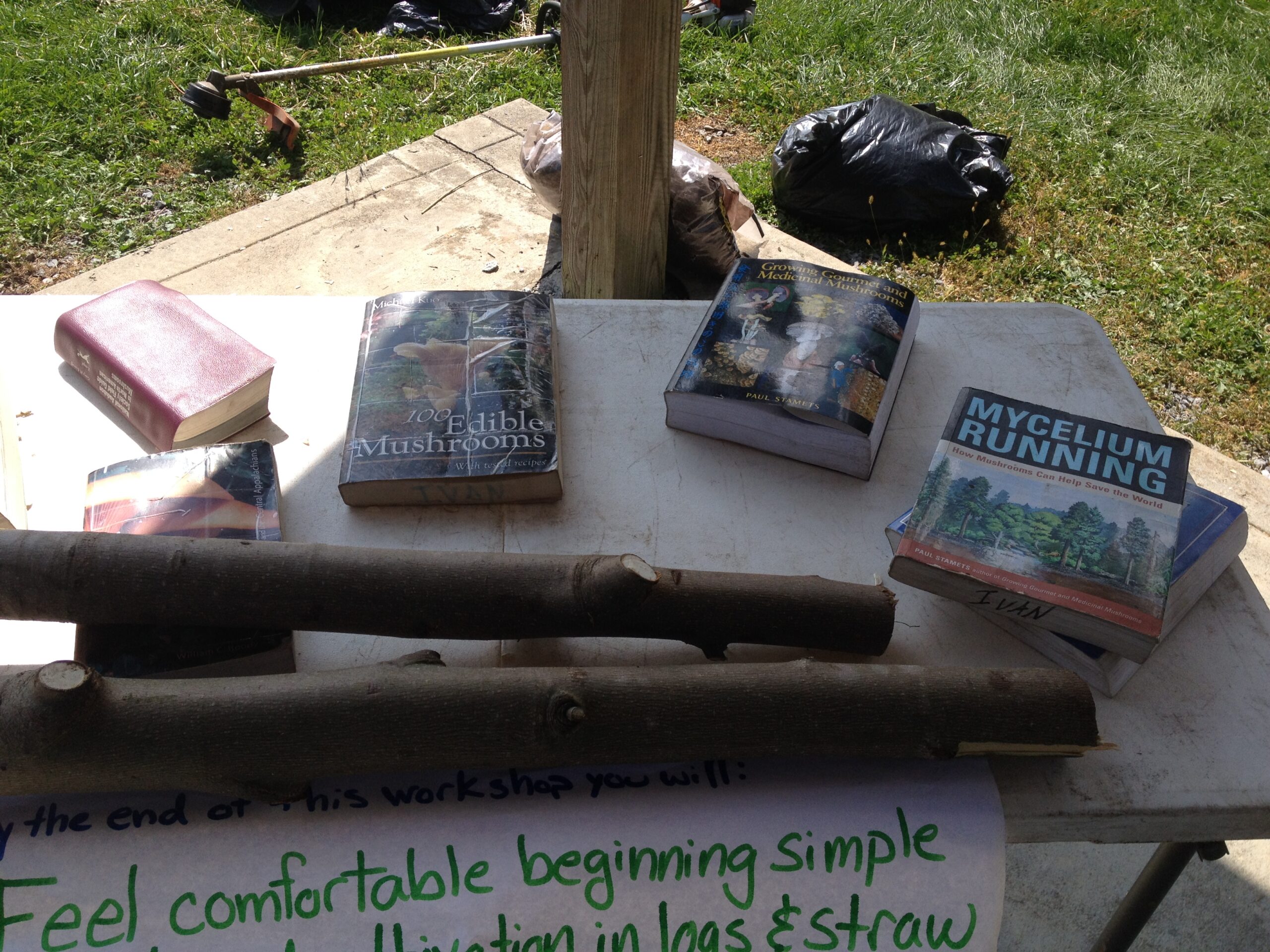Last Saturday, at the Appalachian South Folklife Center, we hosted a workshop on cultivating oyster mushrooms in the backyard. Oyster mushrooms are delicious, shade-loving fungi that decay wood naturally in the forests of North America.
Mo and Ivan, our friends from Cheat Mountain, WV taught us about two different ways to cultivate them, on logs and in pasteurized straw. Mo and Ivan are outdoor education instructors, specializing in wild and cultivated mushrooms and herbs. They sell gourmet and medicinal mushrooms at their nearby farmers market in Elkins and at a few local shops.
To grow oyster mushroom, straw must be moistened and treated with lime, chemicals or heat in order to host the growth of the mushroom mycelium (the branching vegetative part of fungi). We submerged our chopped straw in hot water– 165 degrees F (ish). And once cooled, inoculated the hay- then bagged it, leaving holes in the bags for the mushrooms to emerge out of.
We also inoculated logs with Oyster mushroom mycelium. Oysters will grow on any hardwood but prefer soft hardwoods like aspen, birch sweet gum, tulip polar, and soft maple. Oyster mushrooms aggressively colonize the wood outgrowing its fungi competitors. Trees must be felled live, preferably in a dormant season, and inoculated as soon as possible. Mo and Ivan had chopped down a tulip poplar for this purpose the day before.
We drilled holes into the logs and then filled the holes with mushroom spawn. Then we covered the filled holes and butt ends of the logs with wax to keep down competition with the oyster mycelium. We placed our inoculated logs in a forested ‘hideaway’ near our garden at the Folklife Center.

In a year they will fruit and we will lean them out apart from each other to get more circulation and more mushrooms! If all goes well, each log will produce oyster mushrooms for a few years.
I was excited to learn about the “King Stropharia” mushroom, also called “Garden Giant” and “Red Wine Cap.” This mushroom grows well in a garden on wood chips. There have been positive results of growing King Stropharia in the corn patch as a mutually beneficial relationship. We hope to have Mo and Ivan back next year to help us try out growing those!







Any progress yet? The logs probably will take a while, but what about the bags?